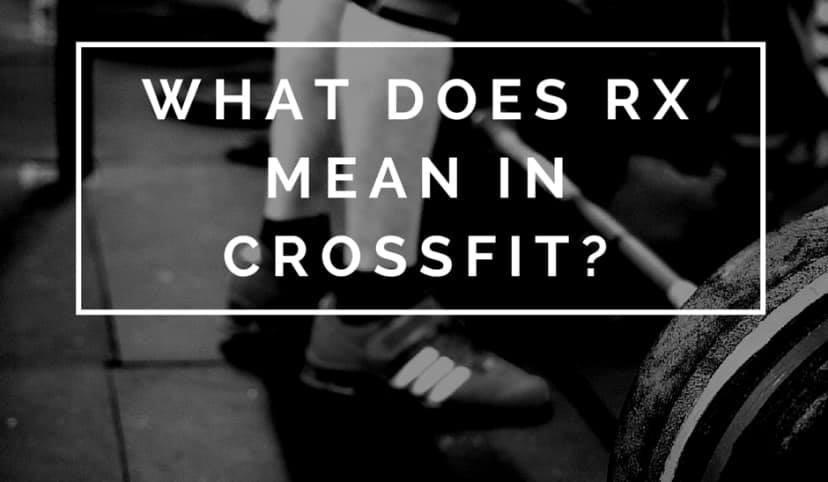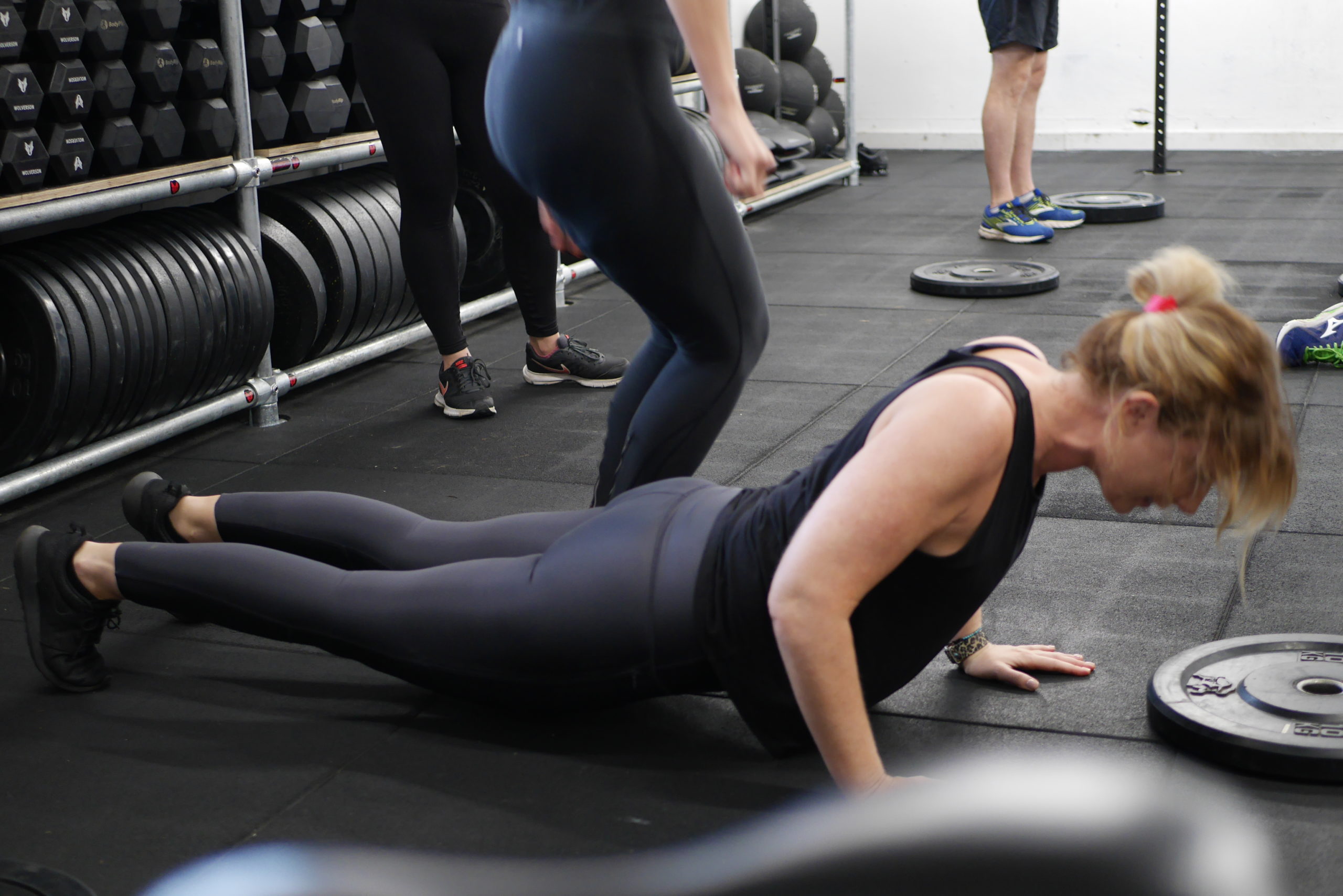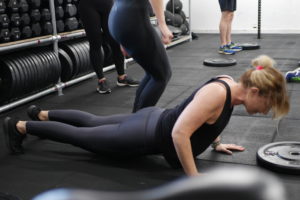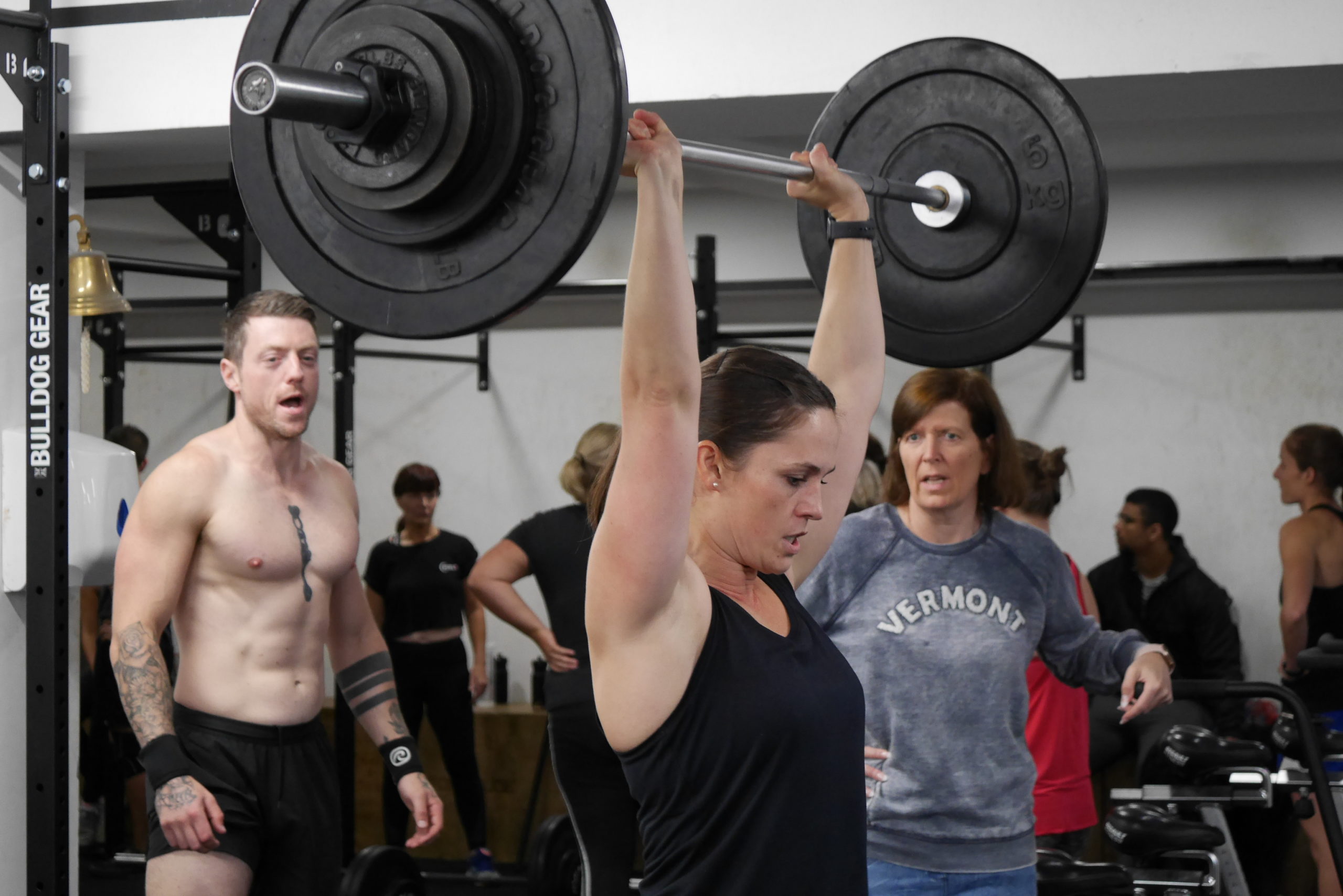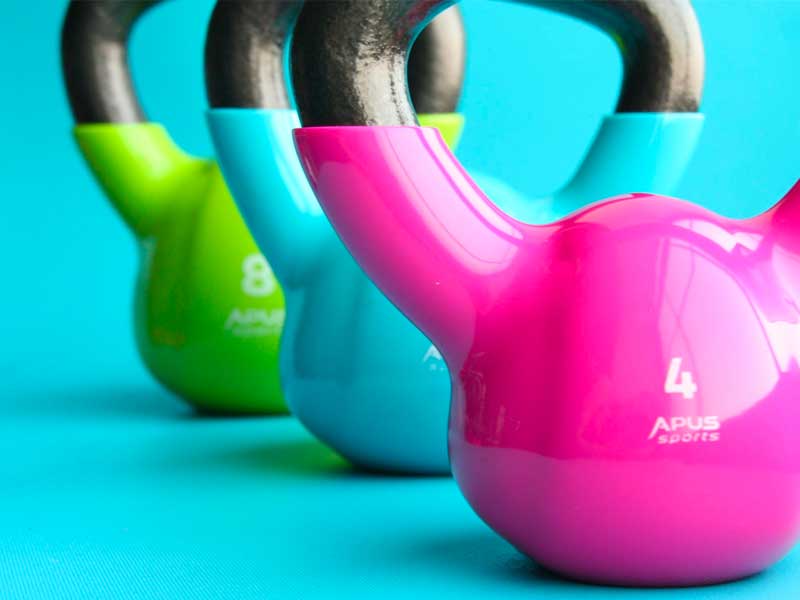CrossFit terminology can sometimes be a little confusing. The sport contains a lot of buzz-words, acronymns and unique CrossFit terminology.
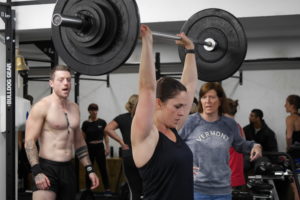
CrossFit Terminology Explained
Here’s our helpful guide to CrossFit terminology. Learn some of the popular CrossFit terminology you will encounter at CrossFit Sale Moor:
Abmat
An abmat is a foam wedge that an athlete places behind his or her back during sit-ups. The abmat provides padding against the ground while increasing your range of motion.
Affiliate
An affiliate is a “box” or gym that is officially affiliated with CrossFit. Gyms need to have CrossFit certified trainers on staff in order to be considered an affiliate.
Air Squat
Think squatting without the weights. Seem easy? Try doing 150 and tell us how it feels.
AMRAP
AMRAP is simple: It stands for As Many Rounds (or Reps) as Possible. In circuit training, an AMRAP workout means you need to try to complete the circuit as many times as possible in the time you’re given.
ATG
Squats the way they’re supposed to be done! The “Ass To Ground” squat is a full-depth squat.
Band-Assisted Pull-Up
Think assisted pull-ups without the fuss of an expensive and cumbersome machine. You can use resistance bands looped over the bar to assist your pull-ups.
Box
A box is a CrossFit gym. It’s as simple as that.
Box Jump
Athletes jump on boxes of a specific height from a two-footed stationary stance. Just remember to jump on it not into it
BS
Not what you think it means. It’s a back squat!
Bumper Plates
Rubberized barbell plates that allow CrossFitters to drop weights without harming equipment or the people around them.
Burpees
You will find burpees in many CrossFit workouts, so this is CrossFit terminology you will hear all the time. Start standing up, bend down and plant your hands, kick back into a plank position, do a push-up. Then bring your legs back up and hop up.
CFT
A CrossFit Total. This is the best of three attempts at a 1RM on Press/Deadlift/Back squat.
CF
CrossFit. Easiest one you’ll see all day.
CFHQ
CrossFit Headquarters.
CFWU
CrossFit Warm-up. Here’s an example:
2-3 rounds of 10-15 reps of:
– Sampson Stretch
– Overhead Squats
– Sit-ups
– Hip Extensions
– Dips
Chipper
A series of movements completed in a sequence. For example: 10 pull ups, 10 pushups, 10 air squats, 10 situps, 10 kettlebell swings & 10 muscleups.
The reps don’t have to be equal for each movement, but you’re generally working through a sequence, which you chip away at.
The filthy fifty is a classic chipper.
CLN
Clean. In the Clean, an athlete lifts the barbell from the floor to a racked position across the shoulders.
C&J
Clean and jerk. A common Olympic lift, the clean and jerk is a combination of the Clean, referenced above, and an additional lift, the jerk. After completing the Clean, athletes lift the bar overhead.
Couplet
Couplets are two exercises that complement each other. They are combined in a specific set formation to form a WOD.
CrossFit Games
CrossFit is the sport of fitness, and the CrossFit Games are where the best CrossFitters in the world compete to become the World’s Fittest Man and Woman.
CrossFit Open
The CrossFit Open is essentially a virtual version of the CrossFit Games. It allows users to register online and compete at local CrossFit boxes.
CrossFit HQ
Owned and operated by founder Greg Glassman, the first CrossFit gym is located in Santa Cruz, CA. The gym is highly respected, and serves as the foundation for a great deal of daily workouts and methodologies.
CrossFit Journal
CrossFitters from around the world use The Journal to learn about workouts, read stories, and get CrossFit news. It’s CrossFit’s internal publication, so it’s one of the most reliable sources for information across the sport.
CrossFit Total
The Total is CrossFit’s signature strength workout. Athletes have three chances to find their max back squat, standing press and deadlift. This will serve as a foundation for an athlete’s growth moving forward.
C2
The C2, or Concept II, is the most widely used rowing machine in CrossFit boxes.
DFL
Dead F’ing Last. It means you’re the last one to finish a workout. Nothing to be ashamed of! In fact, it just means you worked out longer than everybody else!
DL
Deadlift. One of the basic foundational Olympic lifts.
DNF
Did Not Finish. It means what you think it does.
Double-unders/ DU
A double-under is when a jump rope passes under your feet twice with only one jump. It can be quite the challenge, especially if you have to do a lot of them!
EMOM
Every Minute on the Minute. This is a workout where you do a specific exercise every time a new minute starts. If you finish before the next minute begins, you can rest until the next minute starts.
Filthy Fifty
50 Box Jumps, 50 Jumping Pull-ups, 50 Kettlebell Swings, 50 Walking Lunges, 50 Knees to Elbows, 50 Push Press, 50 Back Extensions, 50 Wallballs, 50 Burpees, 50 Double Unders. Got all that? Fun times.
For time/FT
You complete a certain amount of work, no matter how long it takes (perhaps subject to a time cap). This differs from AMRAP where you keep working for a certain amount of time, then you are done.
Fran
It may just be CrossFit’s most famous workout. Fran is a 21-15-9 rep scheme of thrusters and pull-ups. It takes some time to get it down, and even more time to shave your time down, but it’s likely a workout you will see many times as a CrossFitter.
FS
Front squat. The Front Squat movement is very common in CrossFit and is the foundation for many other exercises such as Cleans, Thrusters and Wall Balls. It’s an Olympic lift that you will want to master.
Games Competitor
A competitor at the CrossFit Games. These are professional competitive athletes that are the best in the sport.
GHD
GHD stands for Glute Hamstring Developer. It’s a device that facilitates posterior chain exercises like hip extensions, sit-ups or back extensions
The Girls
The CrossFit Girls are a series of workouts that are foundational in CrossFit. Fran (who we met above), Chelsea, and Annie are extremely difficult, but you will encounter them many times.
GPP
GPP stands for General Physical Preparedness. In other words, your level of fitness.
Grace
Complete 30 clean & jerks at 60/42.5kg as fast as possible. Harder than it sounds—and it doesn’t sound easy!
Greg Glassman
Greg Glassman is the founder of CrossFit. He’s a former gymnast who is still active in coaching and training the CrossFit community.
Handstand Push-up
The Handstand Push-up, or HSPU is a challenging movement where athletes go in a handstand and then perform push-ups from that position. They are common in CrossFit.
HC
A Hang Clean is a movement that starts with the bar above the knee and ends with the bar in the front rack. This is opposed to a “clean” where the bar starts on the ground.
Hero WOD
Hero workouts are challenging CrossFit workouts named after military servicemen, policemen or firefighters who died in the line of duty. They are extremely difficult workouts because they are designed to help us remember the sacrifices that have been made for us.
HSC
A Hang squat clean is a clean exercise where the bar starts at knee height. The athlete begins by pulling up. As the bar begins to rise, the athlete drops into a full squat and catches the bar in a racked position. Then the athlete rises into a standing position.
Isabel
Isabel is another CrossFit “girl” benchmark WOD. It’s a timed workout consisting of 30 snatches 60/42.5kg
KB
KB stands for Kettlebell, a cast-iron or steel weight that looks like a cannonball with a looped handle. It’s used for a variety of exercises from cardio to strength training.
Kip
Ever wonder why CrossFitter’s swing their bodies when they do pull-ups? That’s Kipping. Kipping is use of the entire body’s momentum to complete a move. In CrossFit, Kipping is common in pull-ups as well as handstand push-ups.Kip or kipping is basically using full-body momentum to do a move.
Knees to Elbows
Knees to Elbows, or K2E/KTE is a movement where athletes hang from a pull up bar and shoot their knees up until their elbows and knees touch.
Ladder
A ladder is a workout where you increase reps of each exercise by one for each round.
MetCon
A MetCon is a Metabolic Conditioning workout. MetCons are typically shorter workouts but they are designed to elevate you to a very high heart rate in a short period of time. They are used to train for stamina and conditioning.
Monostructural Movements
This confusing CrossFit terminology refers to running, rowing, biking, swimming, and other endurance like activities.
MU
MU stands for Muscle ups. A muscle up is a pull-up directly followed by a dip. It’s an advanced movement that takes time to master.
Murph
The Murph is one of CrossFit’s most challenging WODs. It’s a one-mile run followed by 100 pull-ups, 200 push-ups, and 300 bodyweight squats, and another one-mile run.
OHS
OHS stands for Overhead squat. This is done by squatting with the bar locked out overhead. Generally a wide grip is used. People with very mobile shoulders can use a more narrow grip.
Paleo Diet
The Paleo Diet is a popular diet that’s often associated with CrossFit.
Paralettes
Paralettes are portable parallel bars that stand at a height of about eight inches. They are used to add complexity to certain (already) difficult movements such as handstand push ups.
PC
Similar to a clean, but the movement does not include a squat. Note: the bar does start on the ground in a power clean.
Pd
Pd stands for Pood, which is a weight measurement for kettlebells. Since kettlebells are Russian, they were traditionally measured in Poods, not pounds. 1 Pood is equivalent to 36.1 pounds, 16.4 kilos, or 2.6 Stone depending on your preferred unit for weight.
Pistol
A Pistol squat is a single leg squat, meaning you have half as much support to lift the same amount of weight. Keep that knee pointed straight ahead!
PR
Personal record. Or PB personal best. Beat your time and record weight? That’s a PR/PB.
PP
PP stands for Push Press. A Push Press is a type of standing shoulder press used often in CrossFit workouts.
PJ
PJ stands for Push Jerk. It’s a very similar lift to the Push Press, but in a Push Jerk, elbows lock out as the athlete is dipping down into a slight squat.
PS
PS stands for Power Snatch. The Power Snatch is a snatch without a squat. Many top CrossFit workouts include the Power Snatch, or something similar.
PU
PU usually refers to pull-ups in CrossFit, but can also refer to push-ups in some cases depending on context.
Pukie the Clown
One of CrossFit’s unofficial and infamous mascots. Pukie is a symbol for what happens when athletes work out so hard that they… 🤮🤮🤮
Rep
Rep stands for Repetition. One performance of an exercise.
Rhabdo
Rhabdo, short for rhabdomyolysis, is a syndrome resulting from muscle injury or high-intensity workouts. While it’s very rare, it can be dangerous. Some symptoms are extreme soreness, inability to move, and dark urine. It’s an example of why rest days in are so important for CrossFitters.
Ring Dip/RD
Think of a normal body weight dip. Now think about doing it with gymnastic rings. It’s much more challenging, but much more rewarding.
Rings
Rings refers to gymnastic rings, which are used in tons of CrossFit movements and exercises such as dips, rows, and muscle ups.
RX’d as RX’d
Rx’d means prescribed. In CrossFit, when if you’re completing a WOD “as Rx’d” it means you aren’t changing or adjusting it in any way. You’re doing it the way it’s supposed to be done.
RM / 1RM
Repetition maximum. Your 1RM or one rep max is your maximum lift for one rep. This is one of the many areas you will often attempt to set a PR (personal record).
Rope Climb
A rope climb is what it sounds like. It’s challenging, but it’s a fantastic exercise for cardio, strength and stamina.
SC
SC stands for Squat Clean. A squat clean is the movement of a clean that turns into a front squat.
Set
A set is a given number of number of reps. For example. 4 sets of 12 reps, which would be shown as 4×12 means do 12 reps 4 times and rest in between.
Snatch
The snatch is an Olympic lift where athletes lift a barbell from the ground to overhead in one fluid movement.
SPP
SPP refers to Specific Physical Preparedness. SPP is an athlete’s level of skill training.
SN
SN is short for Snatch. In CrossFit, you will often see this abbreviation for the common exercise.
SQ
SQ refers to the Squat, one of the most foundational movements in CrossFit.
Strict
Strict is essentially the opposite of Kip. It means you aren’t allowed to use your body’s momentum to help you with a lift or movement.
Subbed
Subbed is short for Substituted. In CrossFit, athletes sometimes sub exercises they are unable to do in a WOD for one they can. For example, an athlete who can’t do muscle ups may opt to do pull-ups and dips separately instead.
Sumo Deadlift High Pull
The Sumo Deadlift High Pull, or SDHP/SDLHP is a movement where athletes start in a wide stance over a barbell and pull up from the ground until the bar gets to shoulder height.
Tabata Interval
A Tabata Interval is a workout of 8 intervals that alternates 20 seconds of max rep work with 10 seconds of rest. The entire time adds up to 4 minutes and it is scored using the lowest interval rep count, so you have to try your best on each interval!
Thruster
A Thruster is a front squat that fluidly transitions into a push press.
TTB / T2B
TTB is short for toes to bar. When hanging from a bar, athletes bend only their waist and raise their toes to touch the bar. Yes, it’s very difficult.
Wall Ball / WB
Wall Ball is a common CrossFit exercise where athletes stand facing a wall with a medicine ball, squat down and then explosively stand, flinging the ball upward and catching it. Prepare to do this often.
Walking Lunge/WL
The Walking Lunge is a common exercise where athletes step forward and bend both legs until their back knee gently touches the ground. Feel free to use a barbell, a plate or just your own bodyweight. It will get challenging sooner than you think! This is possibly the easiest CrossFit terminology to understand.
WO, sometimes W/O
WO stands for Workout. Simple enough! Or walk out!
WOD
Workout of the day. This is probably the most commonly used term in CrossFit terminology.
Zone Diet
A CrossFit endorsed diet based on daily blocks formed with specific quantities of 3 different macronutrients.
Is there another phrase or some CrossFit terminology that you’d like to learn? Contact us to let us know.
 But, what is the Rx? You may know, it stands for “PRESCRIBED” — just like a drug when prescribed by a doctor.
But, what is the Rx? You may know, it stands for “PRESCRIBED” — just like a drug when prescribed by a doctor.